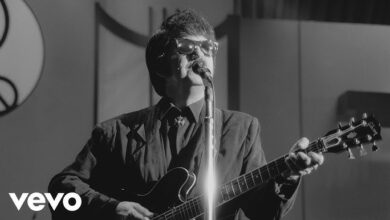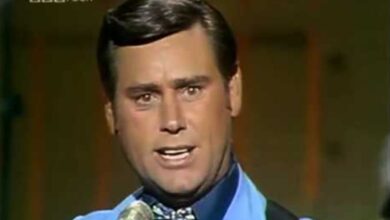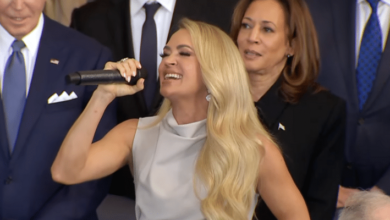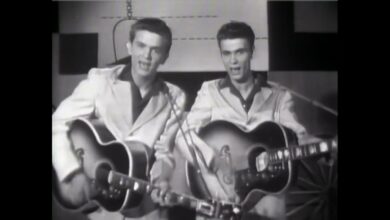The Left Banke’s “Walk Away Renée” Defines Baroque Pop and Captures the Fragile Heart of 1966
In the fall of 1966, American pop music was undergoing a quiet revolution. While electric guitars blazed across the airwaves and psychedelic sounds began taking hold, a delicate and haunting melody entered the charts with a different kind of power. “Walk Away Renée” by The Left Banke wasn’t loud or rebellious. It was tender, classically inspired, and emotionally devastating. Released at a time when Top 40 radio was dominated by British Invasion bands and California surf pop, this melancholic ballad stood out with its string arrangements and chamber-pop sensibilities. Peaking at No. 5 on the Billboard Hot 100, the song not only launched the brief but bright career of The Left Banke, but also defined a new genre—baroque pop—melding rock with orchestral sophistication in a way that had rarely been done before.
The Left Banke formed in New York City in 1965, brought together by keyboardist and songwriter Michael Brown (born Michael Lookofsky), whose classical training and melodic instincts shaped the band’s distinctive sound. Alongside lead singer Steve Martin Caro, guitarist Jeff Winfield, bassist Tom Finn, and drummer George Cameron, Brown assembled a group of young musicians that stood apart from the gritty garage rockers of the day. What made The Left Banke unique was their willingness to embrace classical influences and emotional vulnerability at a time when swagger and rebellion were the norm. They weren’t looking to shake the world—they wanted to score its quiet heartbreak.
The story behind “Walk Away Renée” is as romantic as the song itself. Michael Brown, just 16 years old at the time, had developed a deep but unspoken infatuation with Renée Fladen, the girlfriend of bassist Tom Finn. Brown channeled his feelings into music rather than words, and over the course of a few days, he composed the melody that would become “Walk Away Renée.” The lyrics, co-written with Tony Sansone and Bob Calilli, painted a portrait of love and longing from a distance—of wanting someone you couldn’t have. Brown’s emotional restraint is felt in every note, making the song as much a sigh as it is a statement.
The production of the track was remarkably ambitious for a debut single. Produced by Brown’s father, classical violinist and session arranger Harry Lookofsky, the recording featured a lush string quartet, a plaintive flute line, and Brown’s baroque-inspired harpsichord playing. The contrast between the classical instrumentation and the pop structure gave the song a dreamy, almost surreal quality. Steve Martin Caro’s vocal is subdued but aching, capturing the melancholic tone without ever veering into melodrama. It was a bold choice for a rock band, but it worked. The Left Banke had created something new—an elegant fusion of pop and classical music, delicate yet accessible.
When “Walk Away Renée” was released in July 1966, it slowly began to climb the charts, buoyed by regional radio play and word-of-mouth enthusiasm. By October, it had reached the Top 5 nationally, earning the band their first and biggest hit. Its success was unexpected; few industry insiders believed that such a soft, classically tinged ballad could compete with the louder, edgier sounds of the time. But audiences responded deeply to its sincerity and originality. It became an anthem of unrequited love for a generation, its minor-key sadness capturing the ache of adolescence and young heartbreak.
Beyond its chart performance, “Walk Away Renée” helped broaden the definition of what pop music could be. It proved that a rock band could incorporate strings, harpsichords, and orchestral dynamics without alienating listeners. In doing so, The Left Banke became one of the pioneers of baroque pop, a genre that would influence artists from Love and The Zombies to later groups like Belle and Sebastian. The song also helped bridge the gap between the worlds of pop and high art, suggesting that emotional depth and musical complexity could coexist in the same three-minute package.
For The Left Banke, the hit opened doors quickly—but the band’s rise was as turbulent as it was swift. The group’s lineup changed frequently due to creative differences and internal conflicts, particularly between Brown and the rest of the band. Still, the success of “Walk Away Renée” allowed them to record a full album, Walk Away Renée/Pretty Ballerina, which included more classically influenced tracks. The song’s prominence also led to TV appearances and national exposure, even as the group struggled to hold itself together behind the scenes.
The influence of “Walk Away Renée” can be heard throughout late ‘60s and ‘70s pop. Its blend of classical instrumentation and pop melody inspired countless acts to take similar risks. Even Brian Wilson of The Beach Boys cited The Left Banke as an influence during his Pet Sounds period. Its DNA can also be traced through Elton John’s early arrangements, Electric Light Orchestra’s orchestrated rock, and even the soft introspective works of Paul McCartney during the White Album era. The song was not merely a one-off; it marked a turning point.
Over the years, “Walk Away Renée” has been covered by a range of artists, but none captured its original magic quite like the version recorded by The Four Tops in 1967. Their Motown-flavored take gave the song a different emotional tone—more dramatic and soulful—but preserved its core melancholy. Linda Ronstadt, Rickie Lee Jones, and even Cyndi Lauper have performed it in tribute. Each version confirms its versatility and emotional depth, proof that the song transcends style and genre.
In the midst of its rise, The Left Banke faced internal strife. Michael Brown left the group shortly after their initial success, and while the band continued to release music, none of their subsequent singles matched the impact of “Walk Away Renée.” Brown would later form other short-lived projects, but his most lasting legacy remained tied to the song written for the girl he never could reach. The ache that inspired the music was real—and it stayed in the notes.
Decades after its release, “Walk Away Renée” remains a staple of oldies radio and a favorite of music historians. It consistently ranks among the most beautiful and influential songs of the 1960s, frequently appearing in “Greatest Songs of All Time” lists by Rolling Stone, NPR, and Pitchfork. Its haunting melody and baroque style give it a timeless quality—it doesn’t sound old; it sounds eternal.
The song’s success also helped open the door for more serious, emotionally nuanced storytelling in pop music. It proved that vulnerability could be just as powerful as bravado, and that listeners were more than willing to engage with music that spoke softly but carried emotional weight. In that sense, it paved the way for singer-songwriters and orchestral pop artists alike.
Though The Left Banke never became household names, their influence is undeniable. “Walk Away Renée” stands as a monument to what can happen when youthful emotion meets bold musical vision. It’s a reminder that heartbreak, when handled with honesty and restraint, can become something beautiful. Michael Brown passed away in 2015, but his creation continues to touch hearts around the world.
In the final measure, “Walk Away Renée” is more than a song—it’s a moment, frozen in time. It captures the wistfulness of love not realized, the dreaminess of youth, and the quiet revolution of a band unafraid to be delicate in a loud world. Its impact ripples far beyond its chart life, whispering to every listener who has ever loved from afar and walked away—quietly, but not without feeling.



